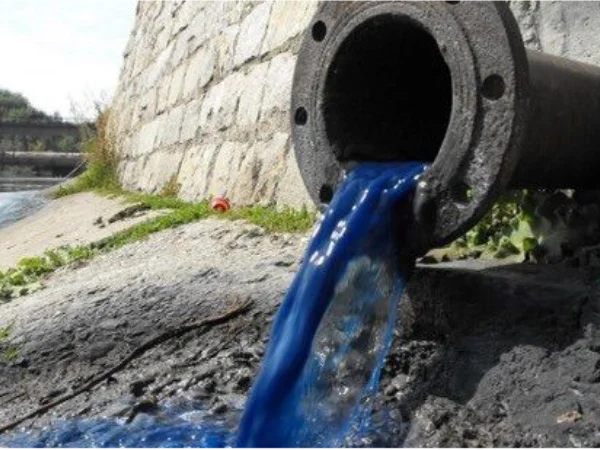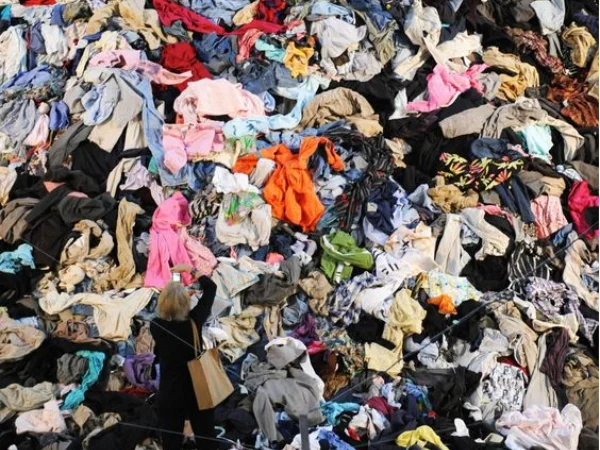The denim fabric has become an iconic and widely popular material in the fashion industry. Known for its durability and timeless style, denim has also gained attention for its environmental impact. In this article, we will explore the impact on the environment of the manufacturing process behind denim fabric. Today we will study these three aspects: air condition, water pollution, and deforestation and land degradation. Through this research, we can better understand the efforts being made towards a greener denim industry. Below is the guideline of this article:
- Air Pollution Effect
- Water Pollution Effect
- Deforestation and Land Degradation
- Conclusion
Air Pollution Effect
Air is the most essential element for every living creature in the world, We will take the first step of a deep look at how denim fabric production affects the Air.
- At the Early Stage
Cotton cultivation often involves the use of synthetic fertilizers and pesticides, which release volatile organic compounds (VOCs) and contribute to air pollution. And with the use of synthetic dyes and chemicals in the dyeing and finishing processes can contain hazardous substances that emit toxic gases when exposed to heat or other chemicals.
- At the Production Stage
Air pollutants from denim fabric production contribute to air quality degradation, leading to smog formation and respiratory issues. When producing denim fabric, lump sum use of energy like oil was required. Which leads to the release of greenhouse gases and contributes to climate change. The use of outdated machinery and inefficient manufacturing processes can result in higher consumption of energy that results in higher emissions of air pollutants.
Workers involved in denim fabric production face increased risks of respiratory disorders, skin irritations, and other health issues due to exposure to hazardous chemicals. Nearby communities may also experience negative health effects, especially if they are exposed to polluted air or water contaminated by denim manufacturing processes. For instance, a study found high levels of VOCs emitted during denim dyeing processes in certain factories.
Air pollution in denim fabric production poses significant environmental and health risks. The causes, consequences, and practical examples discussed in this article highlight the urgency of addressing this issue. It is crucial for manufacturers, consumers, and policymakers to actively support sustainable practices in denim manufacturing by adopting eco-friendly technologies, promoting transparency in supply chains, and advocating for stricter regulations. Together, we can minimize air pollution and ensure a healthier future for both the environment and the communities involved in denim fabric production.
Water Pollution Effect
During the common production of a complex manufacturing process of denim fabric, we are well know that the whole process involves weaving, dyeing, and finishing. However, this process can lead to substantial water pollution if not managed sustainably.
The main process of dye contributes to heavier water pollution in the manufacturing of denim fabric. Chemical dyes used in denim production have the potential to adversely impact water quality, as they often contain hazardous substances that can be toxic to aquatic organisms.

The discharge of untreated dye wastewater into water bodies without appropriate treatment poses a significant threat to aquatic ecosystems.
After weaving the denim fabric, when we come to the pre-treatment and finishing stages, various chemicals are used, such as bleaching agents and softeners, which can have adverse effects on water quality if not properly handled. The disposal of excess chemicals from these processes without adequate measures can contribute to water pollution.
The contamination of rivers, streams, and groundwater with untreated wastewater and chemicals from denim production poses risks to the health of aquatic life and humans alike. The disrupted balance of aquatic ecosystems due to pollutants can result in biodiversity loss and negatively impact fish populations.
The discharge of contaminated wastewater disrupts aquatic ecosystems, leading to the deterioration of biodiversity. Fish populations can be negatively impacted due to the toxicity of pollutants in the water, affecting their reproductive abilities and overall survival.
Contaminated water used in agricultural practices, such as irrigation, can impact soil quality, fertility, and overall productivity. Long-term consequences can include the accumulation of harmful substances in the soil, potentially impairing future agricultural activities.
Deforestation and Land Degradation
After knowing the air pollution and water pollution it should be easy to understand why the denim fabric manufacturing environment effect will include deforestation and land degradation. Let’s continue.
Cotton serves as the primary material for denim production, with its cultivation accounting for significant deforestation worldwide. Forests are often cleared to create space for cotton farming, leading to the destruction of natural habitats and disruption of ecosystems. The demand for cotton in the textile industry continues to drive this unsustainable practice.
The production process of denim involves the use of a plethora of chemicals, particularly in dyeing and finishing. Hazardous chemicals, such as azo dyes and chlorine-based bleaches, are employed, posing risks to both human health and the environment. These toxins end up polluting waterways, impacting aquatic life, and degrading soil quality, leading to long-term ecological damage.
- Fast Fashion Effect
Fast fashion, characterized by quickly produced, inexpensive clothing, has revolutionized the industry. Unfortunately, the pursuit of rapid production to meet customers’ insatiable demand has resulted in devastating consequences for the environment. The fashion industry’s rapid expansion has further fueled the demand for denim, putting immense pressure on natural resources, including land and water.
The fast fashion model promotes a culture of disposability and excessive consumption. As a result, the demand for denim has skyrocketed, leading to the overuse of raw materials, primarily cotton, exacerbating deforestation and land degradation. The continued extraction of resources without proper regeneration poses a significant threat to the environment and contributes to ecosystem deterioration.

With the development of science and technology, people are solving the environmental pollution problems listed above one by one. For example, no pesticides are used in the process of planting cotton, and some beneficial insect control methods are used to solve the problem of insect pests, using environmentally friendly solvents instead of high pollution ones, recycling clothes back to the factory for reuse the cotton fabric and in this way reducing the utilization rate of cotton can help return the land to forest, are gradually becoming easier to operate. This is the most basic contribution that science should make to us.





